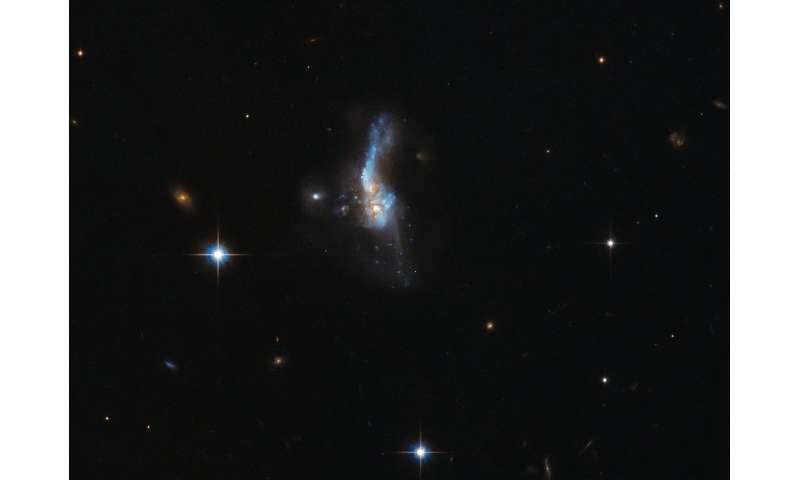https://phys.org/news/2020-11-ten-hyper-luminous-galaxies-stars.html
Herschel and LOFAR images of a few example hyper luminous galaxies. From the contrast, you can see the improvement in spatial resolution in the LOFAR imaging data.
Credit: SRON
A team of astronomers led by SRON Netherlands Institute for Space Research has observed 10 times more hyper-luminous galaxies in the infrared than stars can produce according to the models. If the theory is correct, it means that stars alone cannot account for the brightness of the most luminous infrared galaxies. The paper was published in a special issue of Astronomy & Astrophysics.
After the universe emerged from the Big Bang 13.8 billion years ago, galaxies filled with stars began to form relatively quickly around 3 billion years later. There was plenty of gas to go around, so a small portion of these early galaxies were able to grow into massive, hyper-luminous galaxies, with a brightness of 10 trillion suns. As the gas reserves depleted with time, fewer galaxies could grow at a fast pace.
When astronomers observed the universe with the infrared space telescope Herschel, they found that this theory largely checks out. However, in terms of absolute numbers, it looked like there are over an order of magnitude too many hyper-luminous infrared galaxies, both in the early universe and more recent epochs. Unfortunately, Herschel's spatial resolution couldn't resolve all individual galaxies, so they couldn't say for sure.
An international team of astronomers, led by Lingyu Wang from SRON and RUG, has now used the LOFAR telescope—with higher spatial resolution—to distinguish galaxies individually. They found that indeed, there are over an order of magnitude more hyper-luminous galaxies than the theory predicts. With an uncertainty of a factor two, they can say for sure that we need to look for a different theory.

The observed spectrum and the fitting spectrum of an example hyper luminous galaxy. Along the bottom of the plot, we also show the images of this galaxy in different wavelengths. From left to right: HSC i-band (optical), DXS K-band (near-infrared), IRAC 4.5 μm (mid-infrared), MIPS 24 μm (far-infrared), Herschel SPIRE 250 μm (far-infrared), and LOFAR 2 m (radio). It shows that hyper luminous infrared galaxies are usually very faint or even undetected in optical data and emit most of their energy in the infrared.
Credit: SRON

Example of an ultra-luminous galaxy, with a brightness of a trillion suns.
Credit: ESA/Hubble
The team will perform this follow-up study using the Keck observatory. It will give them more accurate data on galaxies' redshift and therefore their distance. Keck harbors an optical telescope, providing spectra. Astronomers deduce the redshift from spectra by looking at how many wavelengths the characteristic fingerprints have shifted.
Recommend this post and follow
Sputnik's Orbit
https://disqus.com/home/forum/thesputniksorbit-blogspot-com/



No comments:
Post a Comment